I took the plunge with this famous cafetière - my coffee never looked so chic
The Chambord is a global treasure for good reason

The Chambord is a classic cafetière for a reason: it's inexpensive, makes delicious coffee, and it looks chic too. I love the thin, clear glass, but it isn't shatterproof and the filter isn't quite as thorough as models twice the price, but that's why it's so easy to use and plunge.
-
+
Classic, chic design
-
+
Great, affordable price point
-
+
Simple to use (and make delicious coffee with)
-
+
Easy to clean and pour from
-
-
Thin glass isn't very insulating (and could smash)
-
-
The filter isn't as thorough as more expensive models
Why you can trust Woman & Home

Since 1991, Bodum has been making one of the most iconic cafetières (or French presses if you’re American) of all time. It’s surprisingly inexpensive; effective at brewing bold, rich coffee; and, as a former barista, it’s my go-to.
When you look at lists of the best coffee makers, you’re probably picturing the likes of Sage and De’Longhi with their big, professional machines. This, rather rustic, more artisanal little contraption often sits alongside them. To anyone who is new to coffee, this might look strange. However, to me, it makes perfect sense.
The Bodum Chambord produces delicious coffee, if you like the more acidic, bold tones of black coffee. It’s simple to use and much easier to store than bigger machines. If you think that sounds like something you’d like, you’re in luck.
Specifications
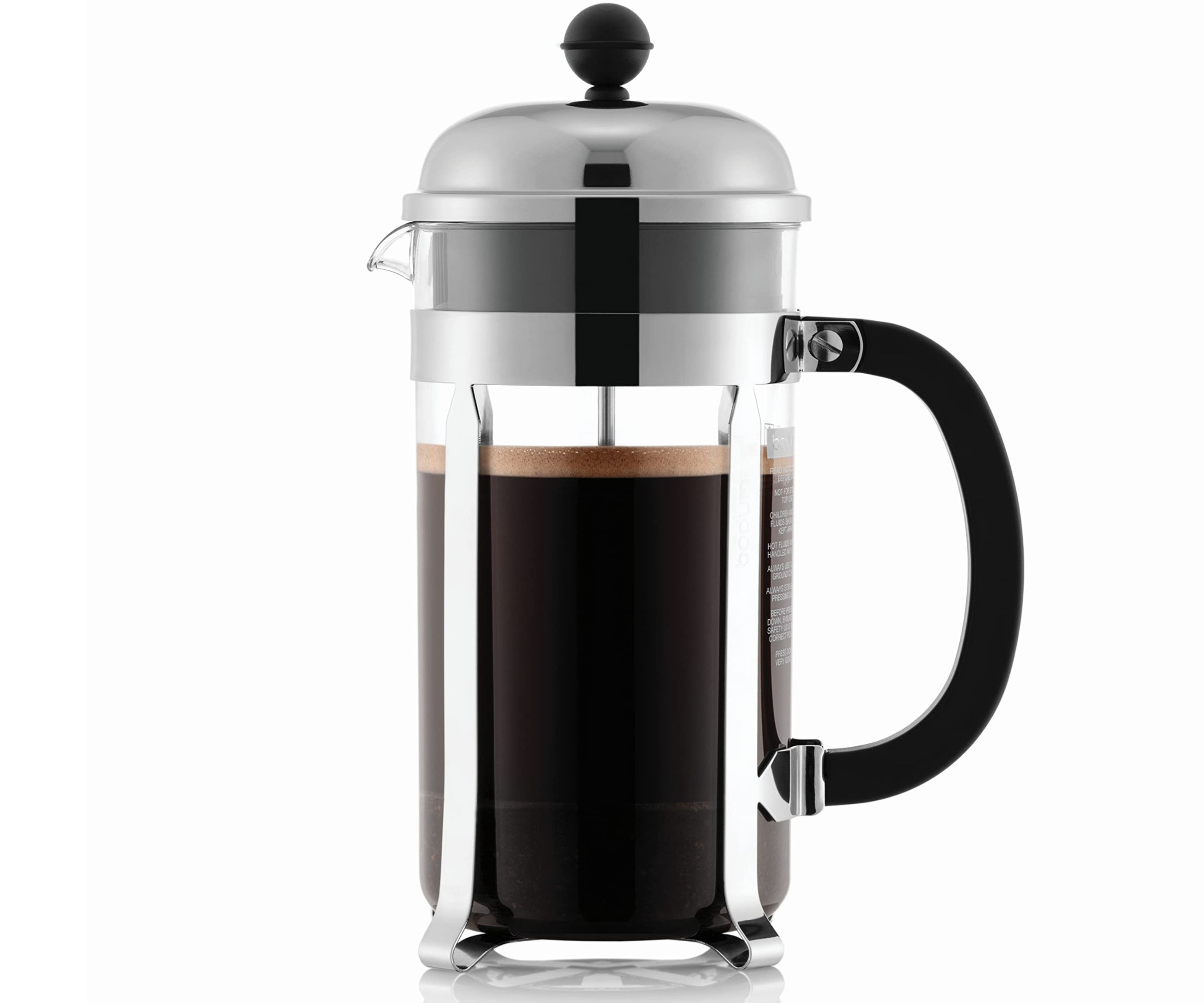
| Dimensions | 11 x 16.8 x 8 cm |
| Weight | 816g |
| Material | Stainless steel, plastic, borosilicate glass |
| Capacity | 12 oz |
Unboxing
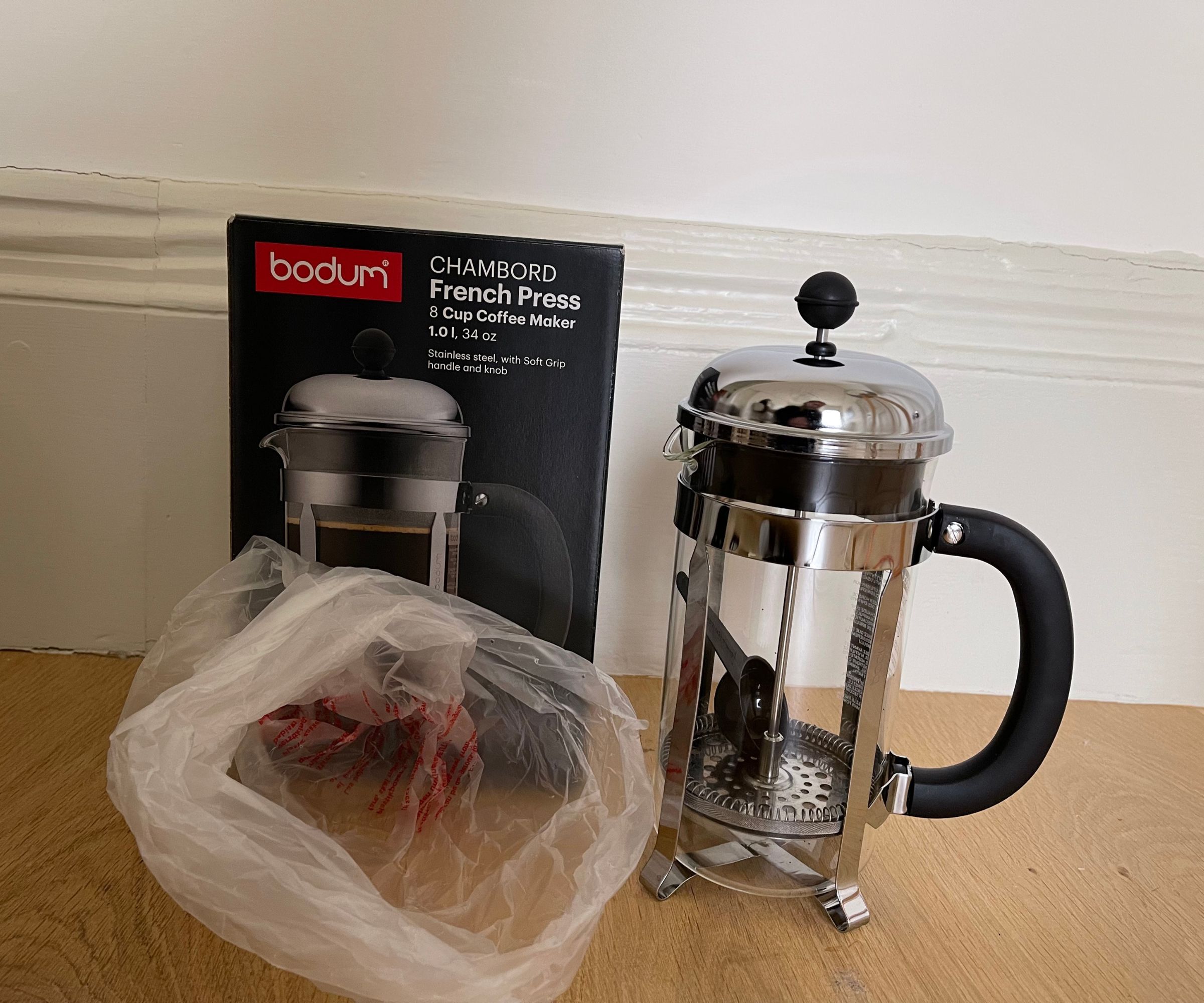
The slim Bodum Chambord comes in a simple cardboard box. Inside, you get your glass carafe, plunger, and a coffee scoop. Not all brands include the scoop, which isn’t really an issue, but the scoop makes like easy for quick, casual brewing. There’s no need to whip out scales or look for the perfect, deep tablespoon to get your ratios right. This scoop is the one that Bodum uses in their recipe recommendations, so it sets you going on the right foot.
Most of the packaging is recyclable, except for the plastic bag that protects the Chambord, which is great from an environmental perspective. You could even recycle the plastic bag if you pop to a big supermarket (lots of these will have soft plastic recycling banks at the front of the store).
Who would it suit?
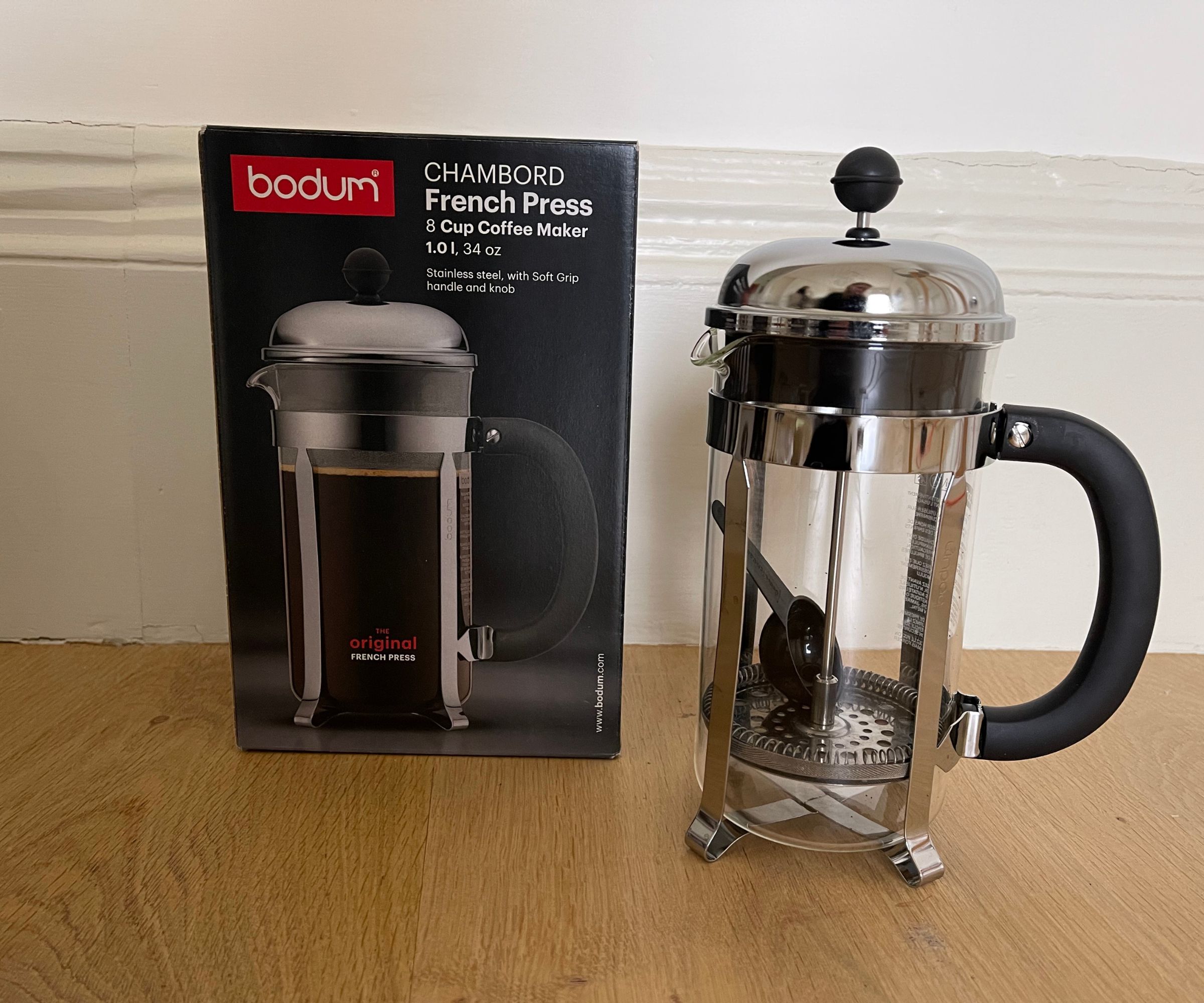
Bodum hasn’t changed the silhouette of the Chambord in the whole time that they’ve been making this cafetière, which means that it has a slightly retro — but tres chic — look. I could see it in most kitchens: small, large, crowded, spacious. I have quite deep drawers, so I can pack it away with my coffee mugs, but you could pop this in a cupboard, if you wanted to keep it out of sight.
In the world of cafetières you’ll get a lot of different materials. Most new models come with double-walled insulation to keep your coffee warmer for longer. The Chambord is just one, thin, glass wall. In some respects, this is great, because you can watch your coffee as it brews. I much prefer this look. However, it does mean that the glass is much easier to smash and it also won’t keep your coffee warm for as long. From a strictly technical perspective, I don’t see this as a disaster. Your coffee shouldn’t sit in a cafetière for more than fifteen minutes, otherwise it will over brew and taste bitter. All the double walled cafetières just enable bad brewing habits. You will, of course, end up with slightly cooler coffee after fifteen minutes than the double-walled alternative. It’s totally dependent on how you like your coffee as to which one you choose.
One final note that I have to include here is the price. Even though this is one of the most popular cafetières on the market, it’s also one of the cheapest. That makes it a great investment for those new to drinking this kind of coffee. The only compromise you make is on filtration: this doesn’t have a rubber seal or double filter like other cafetières, so you might end up with more grains in the bottom of your cup.
What is it like to use?
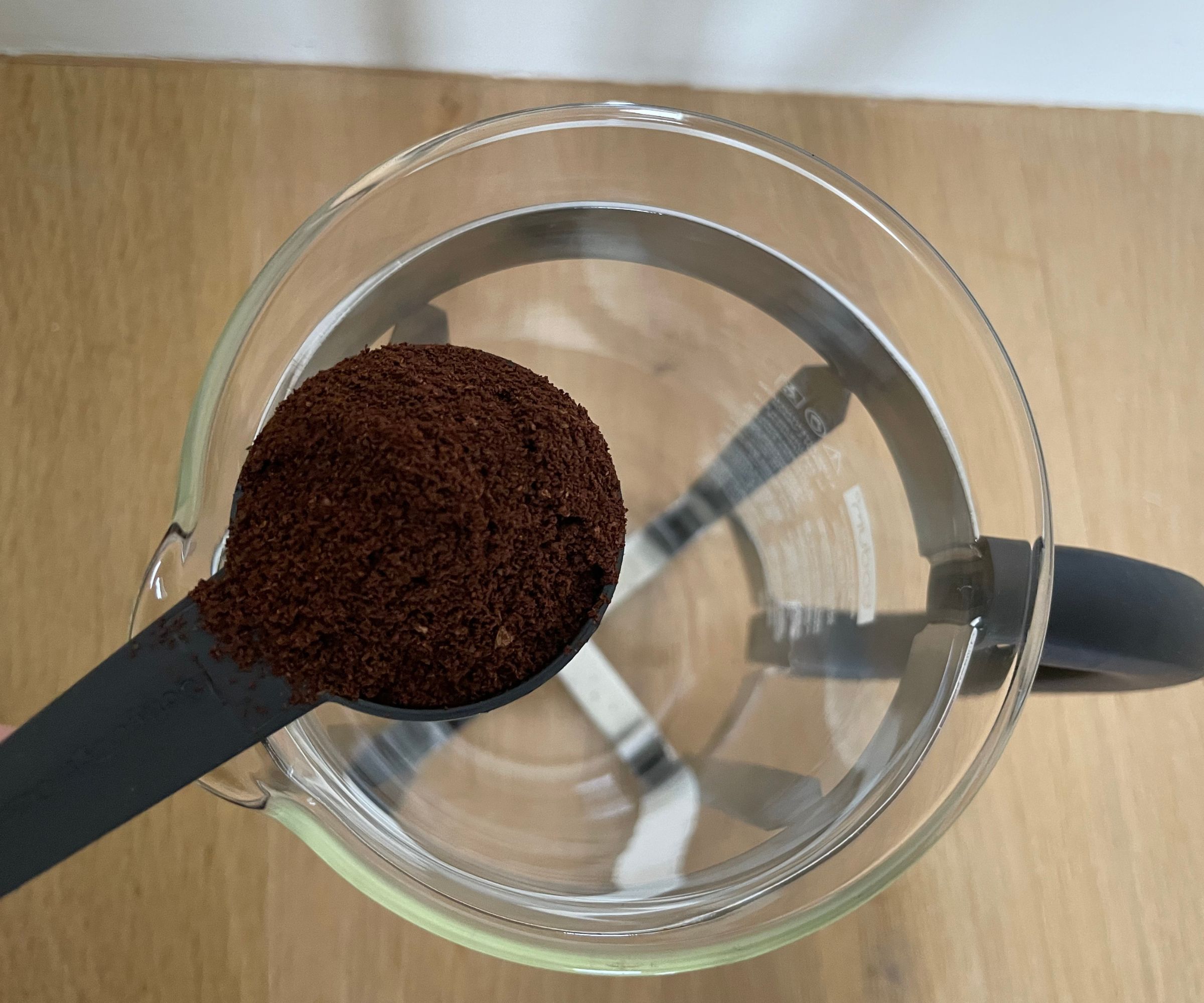
Using the Bodum Chambord is really simple. Lots of the factors that people might consider to be disadvantages, such as the single filter and metal (rather than rubber) seal are actually advantages. The plunger is easy to remove and push down (unlike rubber) and the metal casing keeps you from touching the (very hot) glass that the coffee brews in.
There’s enough space to brew coffee for four to five people in the carafe. Bodum sends a small set of paper instructions for how to brew coffee in the carafe and there’s even more advice online. I followed the traditional 1:12 ratio of coffee to water, because that’s what I do on all my cafetières, so it makes for the fairest test.
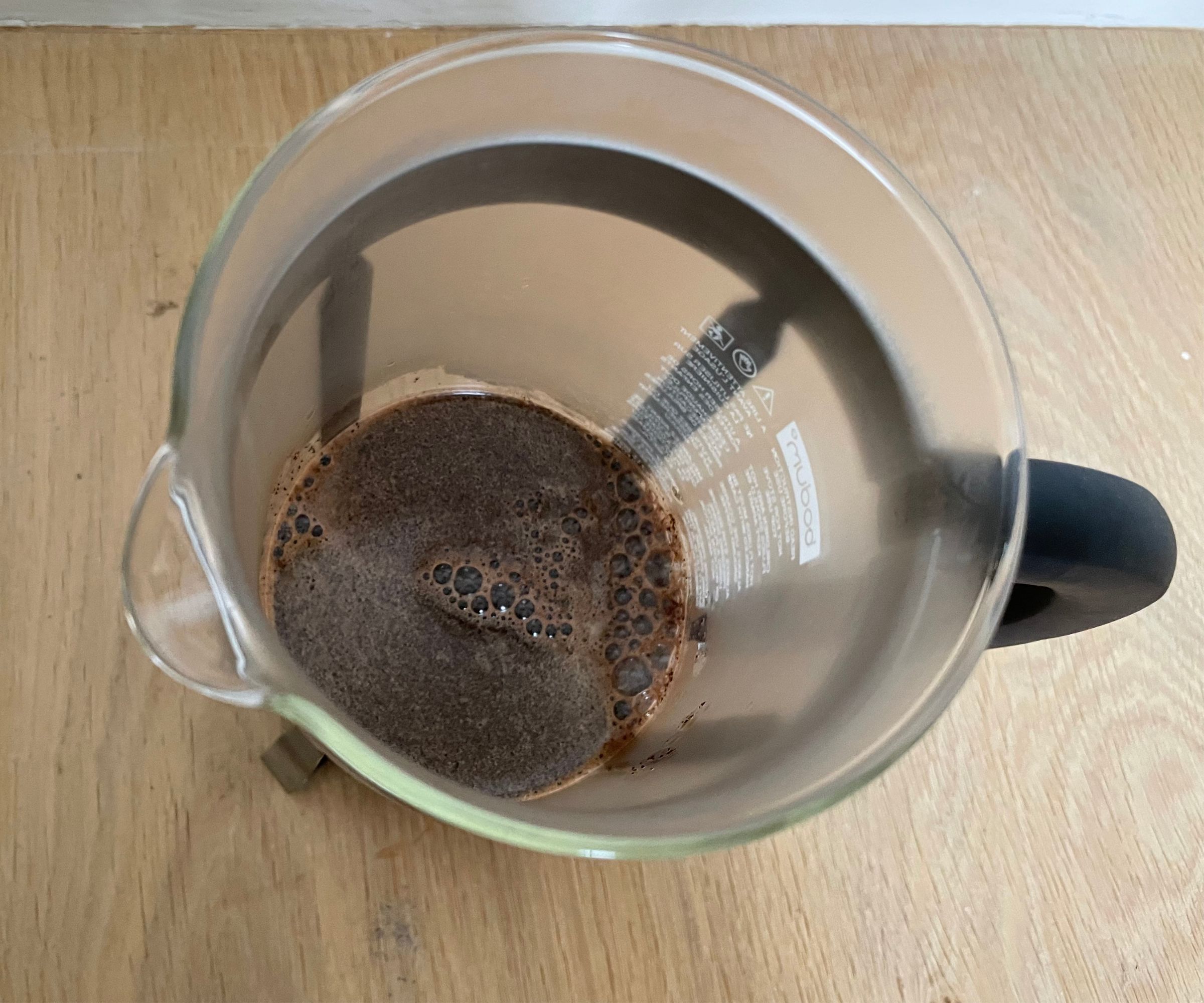
Bodum’s mini scoop will pick up 11.5g of coarse ground coffee. So, in line with that, I added 140ml of water. This made just one cup of coffee, which cooled really quite quickly. The flavours were good — bold and rich — but I needed to gulp down the coffee before it was too cold. If this is something that you’re really concerned about, you can buy an insulating sleeve, but that defeats the point of opting for a glass cafetière.
I found that the Bodum, much like coffee, is better when you have a few friends and family around. Brewing five cups in here is really simple. I just increased al my ratios and let the coffee sit for 10-15 minutes. The beauty of having glass meant that I could watch my grounds float around and bloom, so I knew what I needed to do to brew a good cup of coffee.
While we’re here, if you want some barista tips, pour your water (at 90 degrees) in a circular motion over your grounds. You want them all to be wet and it’s a good sign if you can see bubbles. Lots of people call this ‘blooming’. Essentially, it means that carbon dioxide is leaving your coffee, making it taste less bitter and less acidic.
Cleaning and maintenance
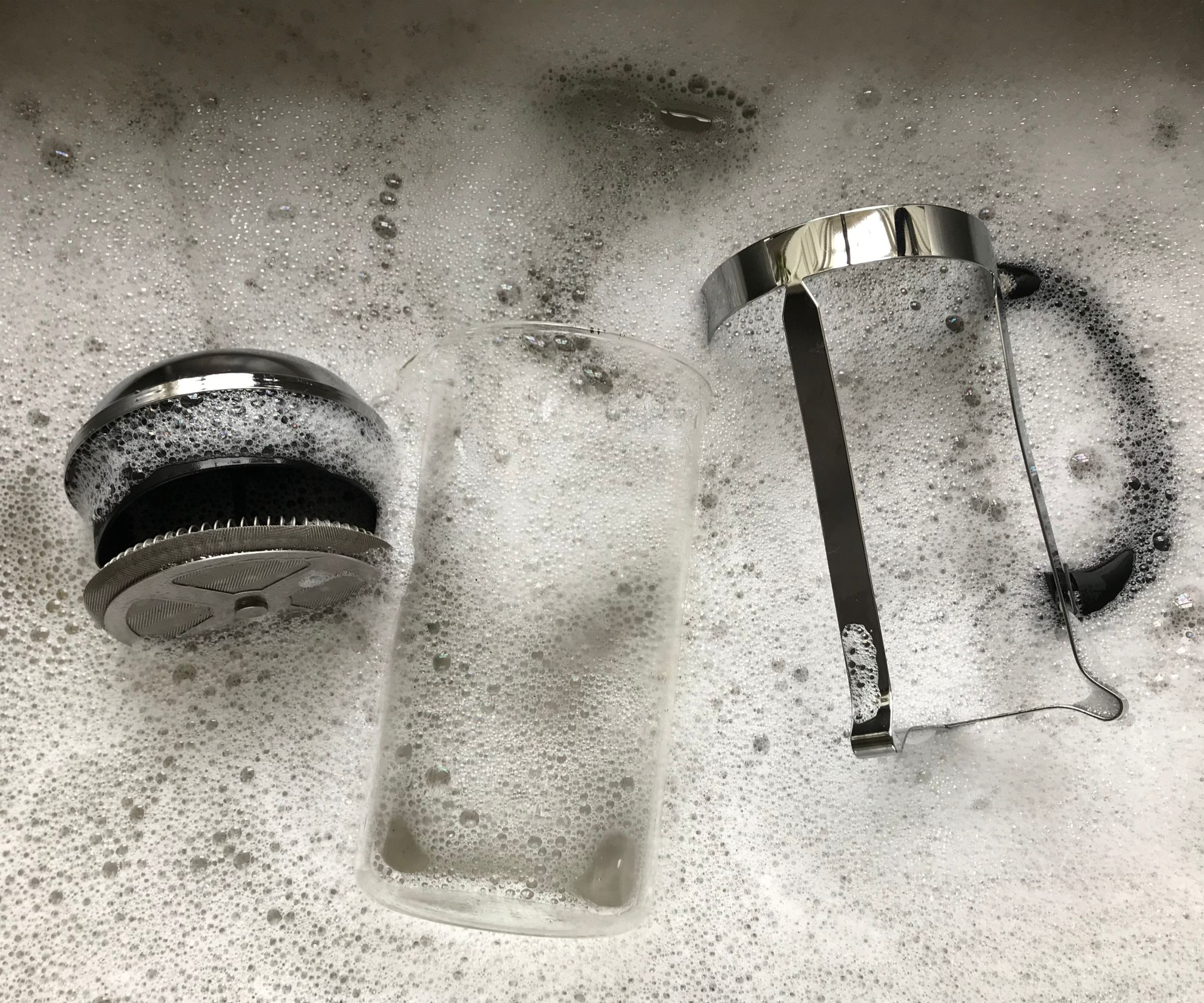
This cleans like all other French presses. The grounds go in food waste or the garden (not down the sink), the carafe goes in the dishwasher, and the plunger will need some special attention. My advice would be to clean it as soon as you’ve poured your coffee, but I understand that’s quite an unrealistic expectation. If you can, sit the plunger in warm, soapy water, so that the coffee doesn’t dry or set on the mesh. Honestly, on a day-to-day, most people just give this a scrub. If you can, I would recommend unscrewing the middle screw, and taking the base apart, so that you can get a deep clean of all the coffee. Aside from a hygiene perspective, it will also help the flavours of your coffee. Old coffee will taste bitter just a few stray grounds will carry with them the potential to ruin your balanced, freshly brewed cup. If you want more help with how to clean a coffee maker, you can read our dedicated page.
How does it compare?
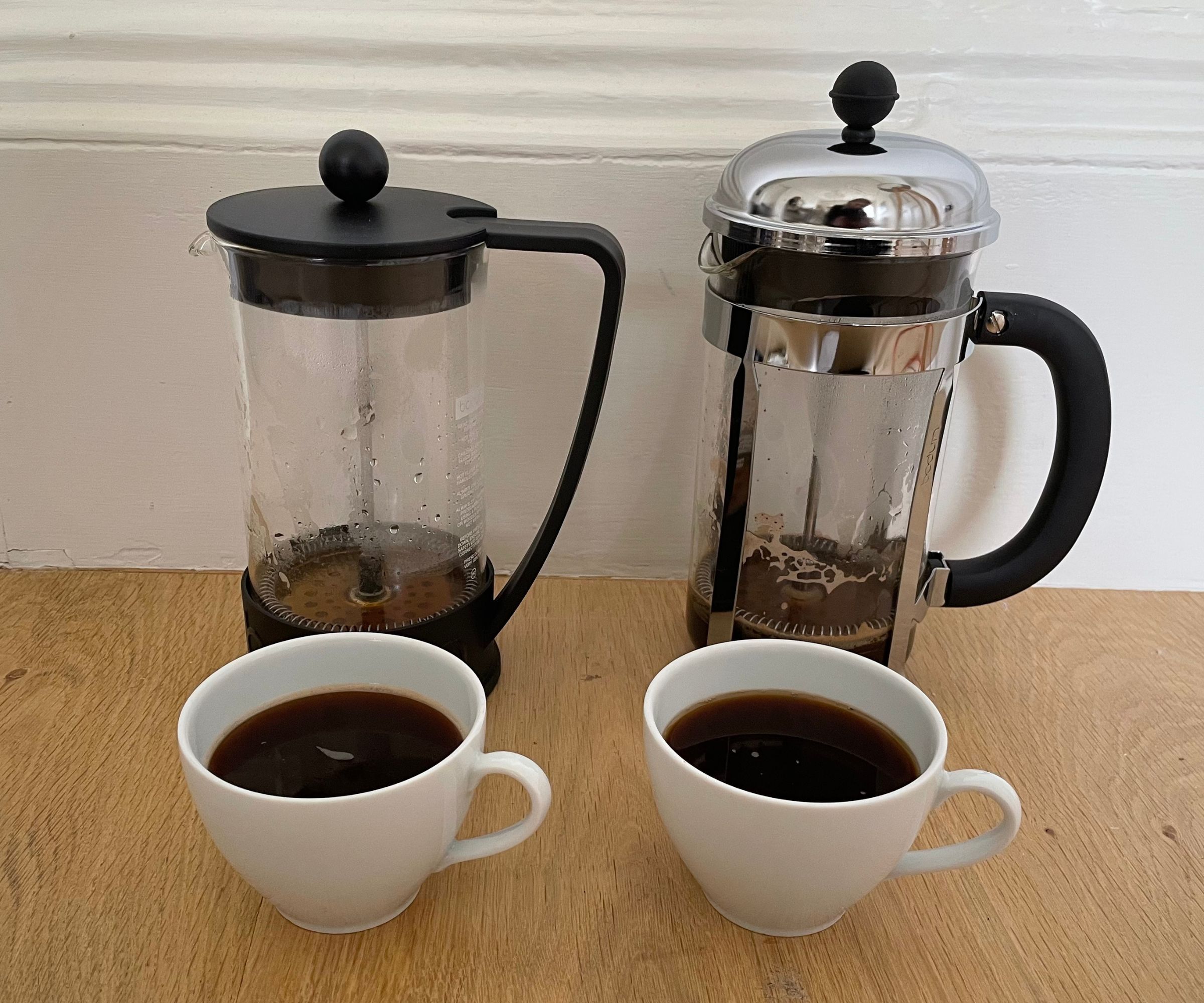
Bodum makes a few different cafetières and the Chambord is objectively the best. Whilst I like the Brazil, the plastic sleeve feels cheaper, isn’t removable (so is hard to clean), and doesn’t offer anything that the Chambord can’t. As for the competition, the only other two cafetières that I would recommend are significantly more expensive. However, these are expensive with good reason, I think.
The ESPRO P7, for example, is a very popular cafetière. It has all the filters that I talked about the Chambord missing: the stainless steel carafe is shatterproof. It’s double-walled, so keeps coffee hot for hours — seriously. The plunger has dual filters and a rubber seal, making it almost impossible for any grains of coffee or bits to get through into your cup. It makes a great brew. Is it a cup of coffee that’s worth tripling your budget for? Maybe. It depends on how dedicated to the cause you are.
The one extra that the ESPRO offers is the ability to make cold brew coffee. While you could use the Bodum Chambord, it won’t make a great cold brew, because a lot of the coffee grounds and grains will escape into your concentrate, so it’ll be quite a grainy drink. The ESPRO, on the other hand, keeps it really smooth.
Should you buy it?

The Chambord is a chic classic, so I recommend it to almost anyone on the hunt for a cafetière. The only people who might want to avoid it are clumsy coffee drinkers (the glass might smash) and coffee snobs (you can get a smoother, hotter cup from more expensive models).
How we test
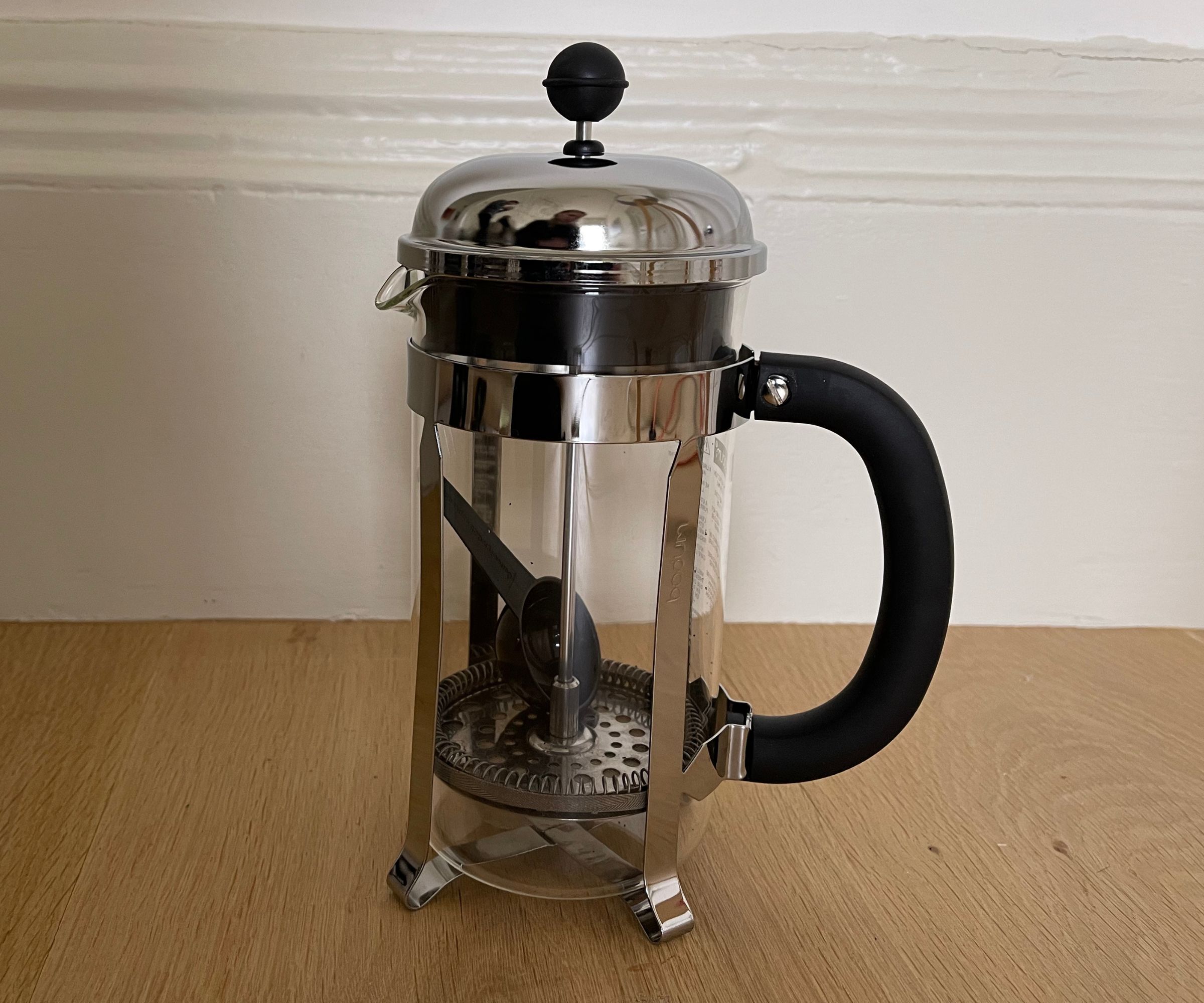
As a former barista, coffee is particularly close to my heart. this means that the process for how we test coffee makers gets a lot of scrutiny. For me, it’s important that we stay on top of the research. That means we know all the classic coffee machine as well as the new and exciting models on the market. If I see one that I think you’d like, I make sure to test it out for a review.
In practice, that means that I use the coffee machine to make at least twenty (often hundreds) of cups of coffee. I’ll use it in my home for months so that I get a good, holistic idea of the maintenance and cleaning that the coffee machine needs as well as an idea of how consistent it is, whether it has any quirks, and whether it’s one that I reach for. There are lots of other factors that I note too, such as the packaging and value of the coffee machine, because I think it’s important to know every fine detail; they can reveal a lot about a brand.
By the end of a review, I like to think that you’ve got a great idea of what this is like to use. If not, send me an email. I’m always happy to answer your coffee queries.
Sign up for the woman&home newsletter
Sign up to our free daily email for the latest royal and entertainment news, interesting opinion, expert advice on styling and beauty trends, and no-nonsense guides to the health and wellness questions you want answered.

Laura is woman&home's eCommerce editor, in charge of testing, reviewing and creating buying guides for the Homes section, so you'll usually see her testing everything from the best dehumidifiers to sizing up the latest Le Cruset pot. Previously, she was eCommerce editor at Homes & Gardens magazine, where she specialised in covering coffee and product content, looking for pieces tailored for timelessness. The secret to her heart is both simplicity and quality. She is also a qualified Master Perfumer and holds an English degree from Oxford University. Her first editorial job was as Fashion writer for The White Company.
-
 Kate Middleton's go-to bag for special occasions is a wedding season essential you'll reach for time and time again
Kate Middleton's go-to bag for special occasions is a wedding season essential you'll reach for time and time againThe Princess of Wales always reaches for the same elegant style of bag for formal events and it works beautifully for weddings.
By Emma Shacklock Published
-
 Dr Amir Khan reveals the 5 symptoms you should 'never' ignore, no matter how 'vague' they are
Dr Amir Khan reveals the 5 symptoms you should 'never' ignore, no matter how 'vague' they areDr Amir Khan, a GP who often appears on ITV's Lorraine, took to Instagram this week to share the symptoms he'll always take a second look at
By Grace Walsh Published
-
 Forget beach bags and sunnies, Jasmine Harman's ravishing red swimsuit was elevated by matchy-matchy lipstick
Forget beach bags and sunnies, Jasmine Harman's ravishing red swimsuit was elevated by matchy-matchy lipstickIf I want to make even the simplest outfit look a bit more polished, colour coordination becomes my style best friend.
By Emma Shacklock Published